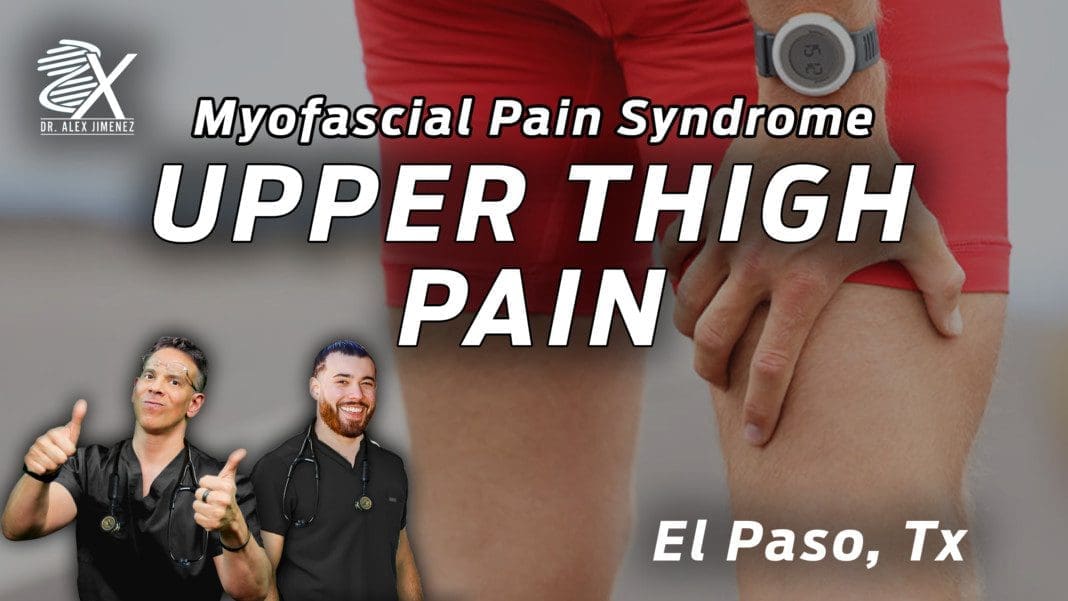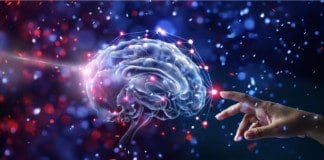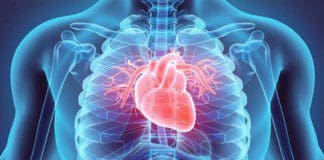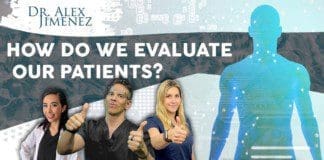Table of Contents
Introduction
Many individuals utilize their lower muscles to move around and stay active as each muscle does its job and allows mobility to the hips and thighs. In sports, the thigh muscles are utilized constantly to extend the legs and bend the knees, allowing a powerful force to win any sports competition. At the same time, various sports injuries can occur to the hips, thighs, and legs and can affect the muscles causing pain and discomfort to the lower extremities. A hamstring injury is one of the most common injuries that can affect the thighs, which can cause many athletes to be taken out of their favorite sport to recover from the injury. Today’s article looks at the hamstring muscle, how trigger points correlate with a hamstring strain, and how various stretches can reduce muscle strain on the hamstrings. We refer patients to certified providers who incorporate multiple methods in the lower body extremities, like upper thigh and hip pain treatments correlating to myofascial trigger point pain, to aid individuals dealing with pain symptoms along the hamstring muscles. We encourage and appreciate patients by referring them to associated medical providers based on their diagnosis, especially when appropriate. We understand that education is an excellent solution to asking our providers complex questions at the patient’s request. Dr. Jimenez, D.C., utilizes this information as an educational service only. Disclaimer
What Are The Hamstring Muscles?
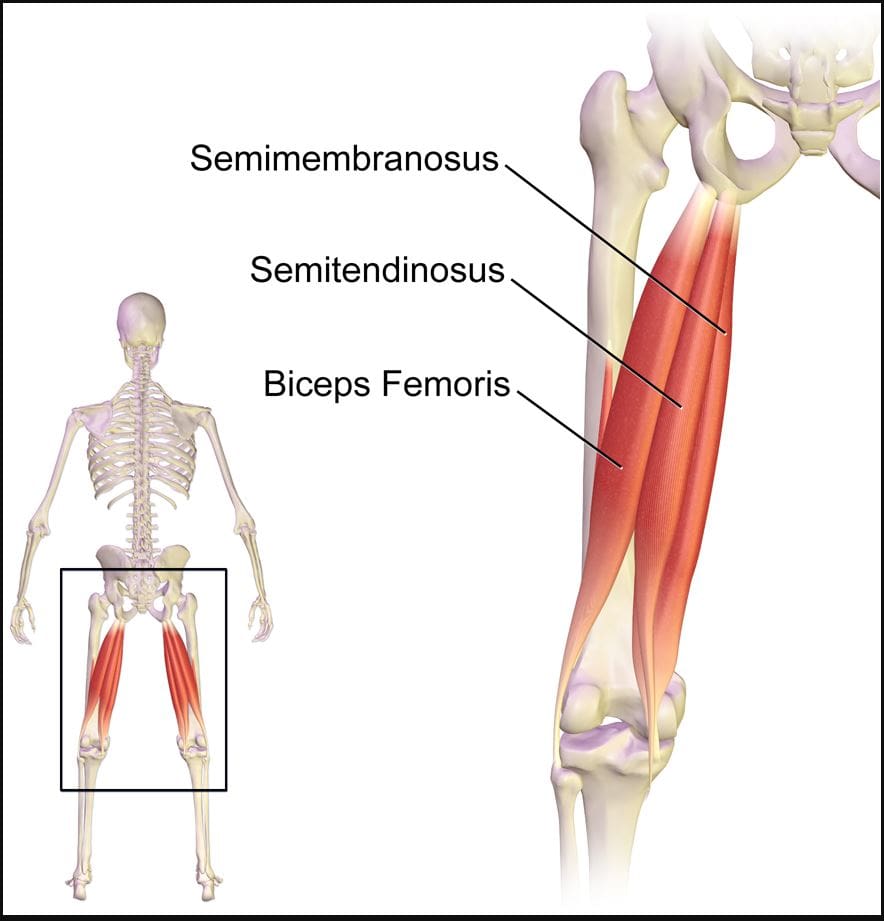
Do you experience pain in the back of your upper thigh? When walking from one place to another, do you hear a popping sound in the back of your thigh? Or are you dealing with muscle tenderness in the back of your upper thigh? Many of these symptoms correlate with issues affecting the hamstrings causing trigger points to affect the upper thighs. As one of the most complex muscles comprising three muscles (semitendinosus, semimembranosus, biceps femoris), the hamstrings play a crucial part in daily activities. From simple actions like standing to explosive movements like sprinting or jumping, the hamstrings are known as posterior thigh muscles that begin from the pelvis and run behind the femur bone and cross the femoroacetabular and tibiofemoral joints. The hamstring muscles in the body play a prominent role in hip extension and is a dynamic stabilizer of the knee joint. To that point, the hamstring muscles are the most susceptible muscle that succumbs to injuries that can lead to disability in the legs and affect daily activities.
Hamstring Strain & Trigger Points

Since the hamstrings are the most susceptible muscles that can succumb to injuries, it takes a while for the muscle to heal, depending on the severity of the damage. Studies reveal that the hamstrings can occur injuries when a person is running or sprinting due to their anatomic arrangement, which causes the muscles to strain. To that point, depending on how much force has impacted the hamstrings, the injuries can lead to 3 of the following:
- Grade 1: Mild pain or swelling (no loss of function)
- Grade 2: Identifiable partial tissue disruption with moderate pain and swelling (minimal loss of function)
- Grade 3: Complete disruption of the tissue with severe pain and swelling (total loss of function)
The pain that patients experience can be painful when walking, causing them to limp. In “Myofascial Pain and Dysfunction,” written by Dr. Janet G. Travell, M.D., stated that when patients are dealing with pain in their hamstrings, it could potentially be associated with trigger points along the three muscles, causing pain and disability in the upper thighs. The book also mentioned that when trigger points affect the hamstrings, it can lead to muscle inhibition, compromising hip stability. Another issue that trigger points associated with hamstring strain causes in the body are that when individuals are sitting down are likely to experience posterior pain in the buttock, upper thighs, and back of the knees. Luckily, there are various ways to reduce the pain along the hamstring muscles.
Trigger Point Of The Week: Hamstrings- Video

Have you dealt with pain along the back of your upper thighs? Does it feel uncomfortable when you are sitting down? Or do your hamstrings ache or feel tight after running for a long period? People dealing with issues in their hamstrings could be dealing with muscle strain associated with trigger points. The hamstring muscles play a vital role in the body as it allows the individual to walk, run, bend the knees and even extend the legs. The hamstring muscles are also the most susceptible to injury, causing disability to the legs. Studies reveal that trigger points associated with the hamstring muscles can lead to soreness or irritability in the muscle fibers that may interfere with the biomechanics and normal functioning of the lower limbs. The video above explains where the hamstrings are located and how the trigger points can cause referred pain to the hamstrings. To that point, trigger points can affect a person’s ability to walk and affect the surrounding muscles in the lower body while mimicking other chronic conditions.
Various Stretches To Reduce Muscle Strain On The Hamstrings

When the hamstrings become injured, the healing rate usually depends on how severe the injury is in the hamstrings. If a hamstring injury is mild, the tears or strains can heal within about three to eight weeks, and if the hamstring injury is severe, the tears or strains could be long as three months. When the hamstrings are tense and on the verge of tearing, many people should stop overusing the muscle. Various stretches can reduce muscle strain on the hamstrings and relieve tension from the hamstrings to allow mobility back to the legs. Studies reveal that manual ischemic compression on the upper thigh muscles can significantly reduce pain in the lower limbs. This allows the individual to manage the trigger points associated with the hamstrings and reduce the chances of them re-occurring in the legs.
Conclusion
As the most important muscle in the lower body extremities, the hamstrings play a crucial part in the body as they allow the individual to walk, run, and stand without feeling pain. However, even though they are important muscles, they are susceptible to injuries. When the hamstrings become injured, the recovery process varies depending on the severity and can develop trigger points along the muscle fibers. To that point, it causes referred pain along the upper thigh muscle and affects a person’s ability to walk. Fortunately, incorporating various stretches to the hamstrings can alleviate the pain and reduce the trigger points from re-occurring in the muscle. This allows mobility back to the legs, and many individuals can resume their daily activities.
References
Esparza, Danilo, et al. “Effects of Local Ischemic Compression on Upper Limb Latent Myofascial Trigger Points: A Study of Subjective Pain and Linear Motor Performance.” Rehabilitation Research and Practice, Hindawi, 4 Mar. 2019, www.ncbi.nlm.nih.gov/pmc/articles/PMC6425406/.
Poudel, Bikash, and Shivlal Pandey. “Hamstring Injury – Statpearls – NCBI Bookshelf.” In: StatPearls [Internet]. Treasure Island (FL), StatPearls Publishing, 28 Aug. 2022, www.ncbi.nlm.nih.gov/books/NBK558936/.
Rodgers, Cooper D, and Avaias Raja. “Anatomy, Bony Pelvis and Lower Limb, Hamstring Muscle.” In: StatPearls [Internet]. Treasure Island (FL), StatPearls Publishing, 29 Jan. 2022, www.ncbi.nlm.nih.gov/books/NBK546688/.
Thummar, Ravindra C, et al. “Association between Trigger Points in Hamstring, Posterior Leg, Foot Muscles and Plantar Fasciopathy: A Cross- Sectional Study.” Journal of Bodywork and Movement Therapies, U.S. National Library of Medicine, 7 Aug. 2020, pubmed.ncbi.nlm.nih.gov/33218537/.
Travell, J. G., et al. Myofascial Pain and Dysfunction: The Trigger Point Manual: Vol. 2:the Lower Extremities. Williams & Wilkins, 1999.
Disclaimer
Professional Scope of Practice *
The information herein on "Dealing With Upper Thigh Pain? Could Be Trigger Points In the Hamstrings" is not intended to replace a one-on-one relationship with a qualified health care professional or licensed physician and is not medical advice. We encourage you to make healthcare decisions based on your research and partnership with a qualified healthcare professional.
Blog Information & Scope Discussions
Our information scope is limited to Chiropractic, musculoskeletal, physical medicines, wellness, contributing etiological viscerosomatic disturbances within clinical presentations, associated somatovisceral reflex clinical dynamics, subluxation complexes, sensitive health issues, and/or functional medicine articles, topics, and discussions.
We provide and present clinical collaboration with specialists from various disciplines. Each specialist is governed by their professional scope of practice and their jurisdiction of licensure. We use functional health & wellness protocols to treat and support care for the injuries or disorders of the musculoskeletal system.
Our videos, posts, topics, subjects, and insights cover clinical matters, issues, and topics that relate to and directly or indirectly support our clinical scope of practice.*
Our office has reasonably attempted to provide supportive citations and has identified the relevant research study or studies supporting our posts. We provide copies of supporting research studies available to regulatory boards and the public upon request.
We understand that we cover matters that require an additional explanation of how it may assist in a particular care plan or treatment protocol; therefore, to further discuss the subject matter above, please feel free to ask Dr. Alex Jimenez, DC, or contact us at 915-850-0900.
We are here to help you and your family.
Blessings
Dr. Alex Jimenez DC, MSACP, RN*, CCST, IFMCP*, CIFM*, ATN*
email: coach@elpasofunctionalmedicine.com
Licensed as a Doctor of Chiropractic (DC) in Texas & New Mexico*
Texas DC License # TX5807, New Mexico DC License # NM-DC2182
Licensed as a Registered Nurse (RN*) in Florida
Florida License RN License # RN9617241 (Control No. 3558029)
Compact Status: Multi-State License: Authorized to Practice in 40 States*
Presently Matriculated: ICHS: MSN* FNP (Family Nurse Practitioner Program)
Dr. Alex Jimenez DC, MSACP, RN* CIFM*, IFMCP*, ATN*, CCST
My Digital Business Card

